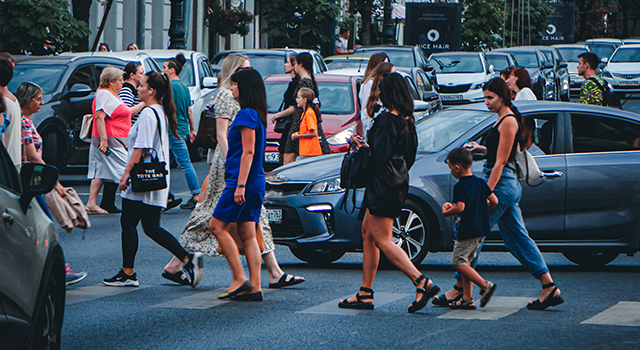 By now, you’ve probably already heard about some of the most common risk factors for a child developing myopia. Excessive near work (like spending hours on digital devices), not enough outdoor play, and genetics all play a role in determining if a child will become nearsighted and to what extent.
By now, you’ve probably already heard about some of the most common risk factors for a child developing myopia. Excessive near work (like spending hours on digital devices), not enough outdoor play, and genetics all play a role in determining if a child will become nearsighted and to what extent.
Less known, however, is the fact that where a child lives may also significantly impact their vision. Below, we’ve explored some research that links higher myopia rates with urban living. Thankfully, The Contact Lens Institute of Nevada in Las Vegas can help.
But First, What’s Myopia?
Myopia is the clinical term for nearsightedness, a refractive error that causes far objects to appear blurry while near objects remain clear.
Nearsightedness is a progressive condition that usually begins when a child is school-aged and stabilizes in early adulthood. Moderate to high levels of myopia are associated with a significantly increased risk of developing sight-threatening diseases later in life, including glaucoma, cataracts, macular degeneration and retinal detachment.
Several factors can contribute to the onset and development of myopia, including a child’s environment.
Does Urban Living Contribute to Myopia?
A 2022 study published in Ophthalmic & Physiological Optics [analyzed] the correlation between urban living conditions and myopia in more than 14,000 students in South India. The results indicated a significant association between high rates of myopia and children living in urban areas, especially among older children.
Another 2022 study, published in Frontiers in Public Health, found similar results among Chinese children and adolescents. Children from urban settings were more likely to be myopic and have anisometropia (one eye significantly weaker than the other eye) than children from rural areas and less likely to have hyperopia (farsightedness).
These findings were consistent with a study published in Investigative Ophthalmology and Visual Science that examined the link between urbanization and myopia in Australian youth.
Similarly, researchers found a significant correlation between living in a city-like environment and being nearsighted. The study also noted that the highest rates of myopia existed in children who lived in apartment-style housing complexes, as opposed to free-standing homes.
Currently, studies are underway aiming to understand why kids who live in urban areas are at higher risk of myopia. In the meantime, the takeaway is this: where your child lives can affect their level of myopia.
The good news is that no matter where you’re raising your nearsighted child, you can offer them their best shot at lifelong healthy vision and eyes with myopia management.
Myopia Management in Las Vegas
Myopia management is an evidence-based method used to slow down the rate of a child’s myopia progression or stop its progression altogether.
By managing their child's myopia, parents can improve their child's eye health and reduce the likelihood of them developing serious eye diseases later in life.
At The Contact Lens Institute of Nevada in Las Vegas, we’re passionate about helping children achieve their best vision now and in the future.
To schedule your child’s myopia consultation, call The Contact Lens Institute of Nevada today!
Our practice serves patients from Las Vegas, Spring Valley, Enterprise, Paradise, Henderson, Summerlin, Pahrump and North Las Vegas, Nevada and surrounding communities.
Frequently Asked Questions with Dr. Stephanie Woo
Q: Why are myopia rates on the rise?
A: It is estimated that half of the world’s population will be nearsighted by 2050, largely due to environmental factors. Children spend less time outdoors and more time indoors focusing on near objects, two major risk factors for developing myopia. To curb the myopia surge, parents should encourage their children to have more daily “sun time,” take frequent breaks when performing near work (like screen time), and have regular visits to the optometrist.
Q: Can a child outgrow myopia?
A: Unfortunately, myopia cannot be cured and a child will not outgrow the condition. Myopia management treatments aim to stabilize a child’s myopia so their prescription will either stop increasing or increase at a much slower rate. If your child has myopia, speak with your child's optometrist regarding ways to keep your child’s myopia progression under control.

